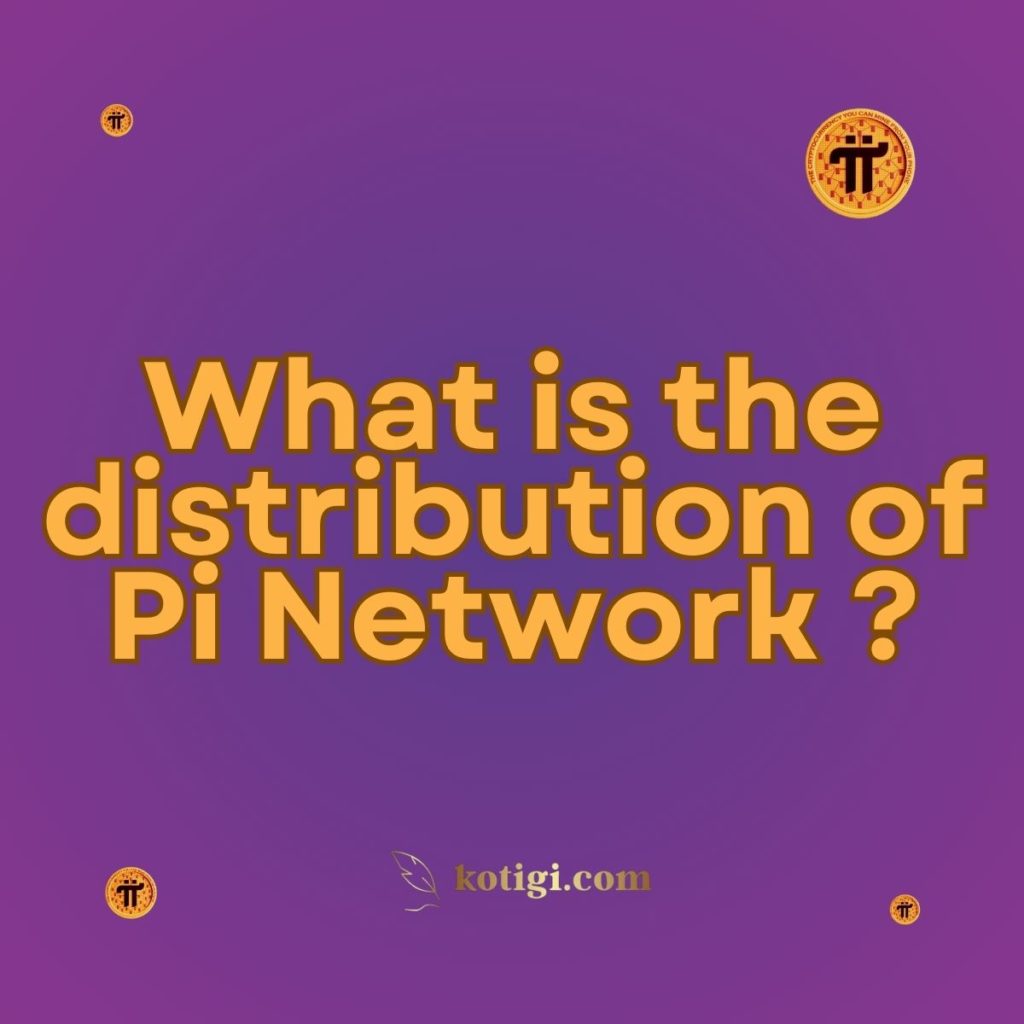
What is the distribution of Pi Network?
The distribution of Pi refers to the process by which Pi Network coins are allocated to users, with a focus on accessibility, community engagement, and a sustainable economic model. Unlike traditional cryptocurrencies, Pi coins are mined through a mobile app, allowing millions of users to participate in the network. Understanding the distribution mechanism is essential for users and potential investors interested in the future value and utility of Pi coins.
Introduction
Since its launch in 2019, the Pi Network has attracted millions of users eager to participate in its innovative approach to cryptocurrency mining. Central to the appeal of Pi Network is its unique distribution model, which allows users to mine Pi coins directly from their mobile devices without the need for expensive hardware or significant energy consumption. This user-friendly method has enabled widespread participation and fostered a growing community of Pioneers. In this article, we will explore the distribution of Pi, detailing how coins are allocated, the underlying principles of this distribution model, and its implications for the Pi ecosystem and its users.
Understanding the Distribution of Pi
The distribution of Pi coins is a foundational aspect of the Pi Network, designed to promote accessibility, community engagement, and sustainable growth. This model is centered around several key principles that distinguish Pi from traditional cryptocurrencies.
Key Principles of Pi Distribution
Pi Network’s distribution model is built upon several key principles, each contributing to its overarching goal of creating an inclusive and thriving ecosystem.
1. Mobile Mining
One of the most significant features of the Pi distribution model is mobile mining. Unlike traditional cryptocurrencies, which require specialized hardware and energy-intensive processes, Pi coins can be mined directly through the Pi Network app. This approach allows users to initiate the mining process with a simple tap on their smartphones, making it accessible to a broad audience. By removing barriers to entry, Pi Network encourages participation from users worldwide, fostering a sense of community among Pioneers.
2. Daily Mining Rewards
Users can earn Pi coins by logging into the app and initiating the mining process daily. The longer users mine, the more coins they can accumulate. The mining rewards are designed to incentivize consistent engagement and participation in the network. This daily mining mechanism not only promotes user retention but also builds a sense of routine and commitment among Pioneers.
3. Referral Bonuses
To encourage growth and expand the community, Pi Network incorporates a referral system that rewards users for inviting others to join the network. When existing users refer new participants, both the referrer and the new user receive bonuses in the form of additional Pi coins. This incentive structure fosters a collaborative environment where users actively contribute to the network’s expansion, further enhancing the distribution of Pi.
4. Limited Supply
The total supply of Pi coins is capped, creating a finite number of tokens that will ever exist. This scarcity principle is fundamental to the economic model of Pi Network, as it aims to prevent inflation and maintain value over time. The development team has established a distribution plan that dictates how many coins will be released at various stages of the network’s evolution, ensuring a controlled and sustainable supply.
Stages of Pi Distribution
The distribution of Pi coins occurs in distinct stages, each aligned with the network’s growth and development objectives. Understanding these stages helps users appreciate the strategic planning behind the distribution model.
1. Testnet Phase
During the testnet phase, which began in 2019, users could mine Pi coins using the mobile app without the need for any financial investment. This phase aimed to build a robust user base and test the app’s functionality. Users mined coins while providing feedback to improve the network’s performance. The emphasis was on community building and establishing the foundational elements of the ecosystem.
2. Mainnet Launch
The transition to the open Mainnet represents a critical milestone in the distribution of Pi. Once the Mainnet is launched, users will be able to exchange their mined Pi coins for real-world value, either by trading them on exchanges or using them in various applications. This transition will mark a significant shift in the distribution dynamics, as Pi coins will become more accessible for transactions and real-world use.
3. Continuous Community Engagement
Post-Mainnet, the distribution of Pi will continue to evolve, focusing on community engagement and fostering real-world applications. The Pi Network team plans to introduce mechanisms that encourage users to spend and utilize their Pi coins within the ecosystem, further integrating the cryptocurrency into everyday transactions. This ongoing engagement is essential for maintaining the value and relevance of Pi coins.
Implications of Pi Distribution
The unique distribution model of Pi Network has several implications for the cryptocurrency’s ecosystem and its users. Understanding these implications can help Pioneers make informed decisions regarding their participation in the network.
1. Community-Centric Growth
The distribution model prioritizes community engagement and participation, fostering a sense of belonging among users. By allowing anyone with a smartphone to mine Pi coins, the network encourages widespread adoption and cultivates a collaborative environment. This community-centric approach is crucial for driving growth and sustaining user interest in the network.
2. Potential Value Creation
As the total supply of Pi coins is limited, the distribution model aims to create a sense of scarcity that can contribute to the potential value of Pi tokens. If the network successfully transitions to the Mainnet and establishes real-world use cases, the demand for Pi coins may increase, enhancing their perceived value. However, this potential value creation relies heavily on the network’s ability to implement its vision effectively.
3. User Empowerment
The distribution model empowers users by providing them with a stake in the network’s success. By participating in mining and referrals, users can accumulate Pi coins and engage actively in the ecosystem’s development. This empowerment fosters a sense of ownership, encouraging users to contribute to the network’s growth and sustainability.
Conclusion
The distribution of Pi coins is a fundamental aspect of the Pi Network, characterized by its unique mobile mining approach, daily rewards, referral bonuses, and limited supply. This user-centric model promotes accessibility and encourages active participation, fostering a growing community of Pioneers. As the network prepares for the transition to the Mainnet, understanding the distribution mechanism becomes essential for users looking to maximize their engagement and potential benefits within the ecosystem. The future of Pi Network hinges on its ability to create real-world utility for its tokens and cultivate a vibrant, engaged community.
Key Takeaways
- The distribution of Pi coins is centered around mobile mining, allowing users to earn coins easily through a mobile app.
- Daily mining rewards incentivize consistent engagement, while referral bonuses encourage users to invite new participants to the network.
- The total supply of Pi coins is capped, creating scarcity that contributes to their potential value over time.
- The distribution occurs in stages, with the upcoming Mainnet launch representing a critical milestone for real-world usability.
- The community-centric approach fosters engagement and empowers users, driving the network’s growth and sustainability.





